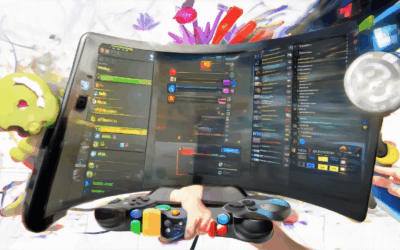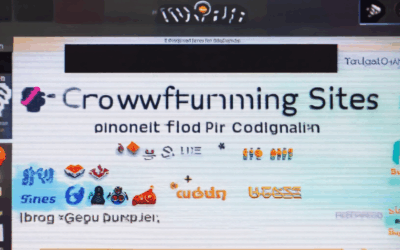Launching an indie game is an exhilarating journey filled with creativity, strategy, and meticulous planning. While the thrill of bringing your vision to life is unmatched, the reality is that a successful indie game launch requires careful preparation and execution. With countless moving parts to manage, from refining your game design to crafting a compelling marketing strategy, it’s easy to feel overwhelmed. That’s why we’ve put together this comprehensive checklist—tailored for both newcomers and seasoned developers—to guide you through the complexities of launching your indie game. Whether you’re preparing for your first launch or looking to refine your existing process, this checklist will serve as your go-to roadmap, helping you navigate everything from market analysis and game development to post-launch maintenance and scaling your success. Dive in, and let’s uncover the essential steps to ensure your indie game launch is as memorable as it is successful.

Key Steps to Ensure a Successful Indie Game Launch
To successfully launch an indie game, follow these organized steps:
- Refine Your Game Concept
- Develop a unique and compelling core mechanic that resonates with your target audience.
- Conduct thorough playtesting to iterate on mechanics and balance.
- Define your game’s theme, art style, and narrative direction early to maintain consistency.
- Build a Dedicated Community
- Engage with fans through social media platforms like Twitter, Discord, and Reddit.
- Utilize newsletters to keep your audience informed about progress and upcoming releases.
- Host regular Q&A sessions, live streams, or community events to foster connections.
- Test Across Platforms
- Test your game on multiple platforms (PC, console, mobile) to ensure compatibility and optimize performance.
- Gather feedback from diverse groups to identify potential issues and improvements.
- Craft a Marketing Plan
- Develop a multi-channel marketing strategy, including social media campaigns, influencer partnerships, and content creation.
- Consider crowdfunding platforms like Kickstarter to pre-order and fund your project.
- Create teaser trailers, screenshots, and developer diaries to build anticipation.
- Select Distribution Channels
- Choose platforms that align with your game’s audience, such as Steam for PC games or mobile app stores for casual games.
- Explore console-specific stores like Nintendo eShop or PlayStation Store for broader reach.
- Partner with platforms that offer additional marketing support or revenue sharing opportunities.
- Prepare for Launch Day
- Create a launch trailer showcasing final gameplay, story, and artwork.
- Offer exclusive content such as skins, soundtracks, or behind-the-scenes videos as incentives for early purchases.
- Coordinate release dates across all platforms to maximize visibility.
- Post-Launch Support and Updates
- Regularly update your game based on player feedback to maintain engagement.
- Organize community events, competitions, or seasonal challenges to keep players invested.
- Provide excellent customer support to address issues promptly and enhance the overall experience.
By following these steps, you can position your indie game for success and grow your community effectively. Remember, persistence and adaptability are crucial in the competitive world of indie game development.
Key Steps for a Successful Indie Game Launch
Here’s a comprehensive guide to launching your indie game successfully:
- Pre-Launch Preparation
-
Develop a Unique Selling Proposition
Create a clear and compelling unique selling proposition (USP) that sets your game apart from others. Focus on what makes your game innovative, emotional, or culturally significant.
-
Build a Strong Brand Identity
Develop a memorable brand identity with a unique name, logo, and visuals. Consistency in branding helps establish trust and recognition among your target audience.
-
Define Your Target Audience
Clearly identify who your game is aimed at—whether casual gamers, hardcore players, or families. Tailor your marketing efforts to resonate with their preferences and habits.
-
Game Development
-
Refine Your Concept
Continuously iterate on your game concept, mechanics, and art style based on feedback and testing. Ensure your vision aligns with player expectations and market demands.
-
Hire a Talented Team
Assemble a skilled team of designers, programmers, and artists to bring your vision to life. Collaborate closely to maintain creative integrity and quality standards.
-
Implement Quality Assurance
Conduct thorough playtesting and bug fixing to ensure your game runs smoothly across various platforms and devices.
-
Marketing and Promotion
-
Budget Effectively
Plan your marketing budget wisely, focusing on digital advertising, influencer partnerships, and community building. Allocate funds for promotional activities and content creation.
-
Engage with Your Community
Build a loyal community through social media, forums, and newsletters. Engage with fans by sharing behind-the-scenes content, updates, and exclusive previews.
-
Utilize Influencers and Press
Partner with popular gaming influencers and bloggers to reach a wider audience. Pitch your story to gaming journals and websites to gain credibility and exposure.
-
Launch Strategy
-
Choose the Right Release Timing
Select a launch window that aligns with your marketing efforts and the game’s readiness. Avoid busy release periods unless you can handle the competition.
-
Execute a Multi-Channel Launch
Launch your game across multiple platforms, including PC, consoles, and mobile, if applicable. Adapt your marketing strategies to suit each platform’s audience.
-
Monitor and Adapt
Keep track of your game’s performance post-launch. Respond to feedback, update your game, and promote any positive reception you receive.
-
Post-Launch Support
-
Plan Regular Updates
Schedule regular updates, expansions, or sequels to keep your game fresh and engaged. Listen to player feedback and implement changes that address their concerns.
-
Foster a Positive Community
Maintain a supportive and inclusive community space. Resolve conflicts and celebrate milestones to strengthen player loyalty.
-
Expand Your Revenue Streams
Explore additional monetization strategies like in-game purchases, ads, or merchandise sales without compromising your game’s integrity.
By following these steps, you can maximize your chances of success and leave a lasting impact in the indie game scene. Remember, persistence, adaptability, and a strong connection with your audience are key to achieving your goals.

What are the key steps needed for a successful indie game launch?
- Preparation Phase
- Research and Planning
- Define your target audience and platform preferences.
- Set clear objectives and milestones.
- Develop a detailed roadmap and timeline.
- Development and Testing
- Finalize core mechanics and features.
- Conduct extensive playtesting and gather feedback.
- Refine artwork, sound design, and narrative.
- Marketing Strategy
- Build an online presence through social media platforms.
- Create teaser trailers and developmental updates.
- Engage with communities and influencers.
- Research and Planning
- Launch Phase
- Release Strategy
- Choose the optimal launch timing and platform.
- Coordinate simultaneous releases across multiple platforms.
- Prepare for server load and technical challenges.
- Public Relations and Press
- Distribute press releases and pitch stories to relevant outlets.
- Arrange interviews and feature coverage.
- Monitor media mentions and respond appropriately.
- Social Media and Community Engagement
- Run targeted social media campaigns.
- Host live streams, Q&A sessions, and giveaways.
- Maintain active community discussion forums and groups.
- Release Strategy
- Post-Launch and Iteration
- Update and Support
- Regularly update the game based on player feedback.
- Implement bug fixes and improvements.
- Expand content through patches and expansions.
- Community Building
- Continue engaging with fans through updates and events.
- Foster a loyal fanbase through rewards and exclusive content.
- Collaborate with influencers and partners for further growth.
- Update and Support

Essential Steps for a Successful Indie Game Launch
Launching your indie game is a significant milestone, and to ensure your project reaches its full potential, it’s crucial to follow a well-structured plan. Here are the key steps that will guide you through a successful launch:
- Define Your Unique Selling Proposition
- Develop a Strong Pre-Launch Strategy
- Craft Compelling Marketing Materials
- Build a Loyal Community
- Execute a Multi-Channel Marketing Campaign
- Prepare for Launch Day
- Launch and Monitor Feedback
- Post-Launch Maintenance and Expansion
Your game needs a clear identity and a unique angle that sets it apart from others. Identify what makes your game special and tailor your marketing efforts around this unique feature.
Plan your launch timeline, including beta testing, early access periods, and teaser campaigns. Engage your audience through social media, newsletters, and community platforms to build anticipation.
Create eye-catching trailers, screenshots, and gameplay demos. Write a compelling game description and develop a catchy tagline that resonates with your target audience.
Engage with your potential players on forums, social media, and gaming communities. Create a Discord server or Facebook group to foster a dedicated fanbase before launch.
Utilize various platforms like YouTube, Twitch, Reddit, and Twitter to promote your game. Partner with influencers and streamers who align with your game’s theme to reach a wider audience.
Ensure your website, store, and all distribution platforms are fully functional and ready to handle high traffic. Have backup plans in place for any technical issues that may arise.
Go live with your game and closely monitor player reactions. Be prepared to update your game based on feedback and engage with your community to address any issues promptly.
Continuously update your game to keep players engaged. Release regular updates, new content, and consider expansion packs or DLCs to extend the life of your game.
By following these steps, you can maximize your chances of launching a successful indie game and building a lasting connection with your players. Remember, persistence and adaptability are key to long-term success in the competitive world of indie game development.
The Complete Indie Game Launch Checklist
Launching your indie game is a pivotal moment, and preparation is key to its success. Here’s a detailed checklist to guide you through the process:
- Pre-Launch Preparation
- Game Development: Ensure your game is polished, bug-free, and optimized for all target platforms.
- Platform Compatibility: Test your game across PC, consoles, mobile, and other platforms to ensure smooth operation.
- Marketing Materials: Develop a strong visual identity with logos, trailers, screenshots, and a compelling game description.
- Budget Planning: Allocate funds for development, marketing, and distribution while considering potential revenue streams.
- Legal Considerations: Secure necessary licenses, clear rights to music/sound effects, and comply with platform policies.
- Target Audience Identification: Understand your audience’s demographics, preferences, and interests to tailor your approach.
- Social Media Presence: Build a strong online presence on platforms like Twitter, Instagram, Discord, and YouTube.
- Influencer Partnerships: Collaborate with gaming influencers and streamers to reach a wider audience.
- Community Building: Engage with fans on forums, social media, and through regular updates to foster loyalty.
- Pricing Strategy: Decide on your pricing model (e.g., free-to-play, pay-per-download, subscription-based) based on your target market.
- Release Timing: Choose a launch date that aligns with your marketing efforts and avoids major holidays or competitor launches.
- Press Releases: Distribute press releases to gaming media and bloggers to generate buzz.
- Live Stream Launch Party: Host a live stream event to reveal your game, engage with fans, and showcase gameplay.
- Update Announcements: Share updates leading up to launch to keep your audience excited and informed.
- Post-Launch Support Plan: Prepare for updates, patches, and expansions to keep your community engaged post-launch.
- Analytics Tracking: Use tools like Google Analytics, Steamworks, or Twitch to monitor player behavior and engagement.
- Player Feedback: Actively gather feedback through surveys, forums, and social media to identify areas for improvement.
- DLC and Expansions: Plan and release additional content based on player demand and feedback.
- Performance Monitoring: Continuously check server stability, download speeds, and customer support inquiries.
- Discord or Forum Setup: Create a dedicated space for your community to discuss, share experiences, and stay connected.
- Regular Updates: Maintain consistent communication with your audience through newsletters, social media, and live events.
- Fan Involvement: Invite fans to beta test, contribute ideas, and participate in community-driven initiatives.
- Contests and Giveaways: Engage your audience with contests and giveaways to promote your game and build excitement.
By following this checklist, you’ll be well-prepared to launch your indie game successfully. Remember to leverage resources from Indie Dev Games for further insights and tools to enhance your launch strategy.

Complete Checklist for a Successful Indie Game Launch
Launching an indie game is a thrilling yet challenging endeavor. To ensure your game achieves its full potential, follow this comprehensive checklist tailored for indie developers:
Pre-Launch Preparation
- Market Research: Analyze your target audience, competition, and genre trends to tailor your game to niche markets.
- Platform Selection: Choose the most suitable platforms (e.g., PC, consoles, mobile) based on your game’s mechanics and audience preferences.
- Development Milestones: Finalize all features, optimize performance, and conduct thorough testing to ensure a polished product.
- Visual Identity: Create a cohesive brand identity with a logo, color scheme, and typography that resonates with your audience.
- Website Development: Build a professional website with essential info like gameplay trailers, screenshots, and a bio.
- Social Media Setup: Establish presence on platforms like Twitter, Instagram, Discord, and TikTok to engage with fans.
- Influencer Partnerships: Collaborate with streamers and influencers to reach wider audiences through gameplay reveals and reviews.
- Community Building: Engage with fans on forums, Reddit, and social media to foster a loyal community around your game.
- Press Kit Preparation: Create press materials including screenshots, descriptions, and bios for media coverage.
- Legal Considerations: Secure necessary licenses and clear any rights to music, assets, or intellectual property.
- Funding and Pricing Strategy: Decide if crowdfunding is viable and set a competitive price point for release.
Launch Day Execution
- Teaser Campaign: Release teasers leading up to the launch to build anticipation and reveal key details gradually.
- Release Date Timing: Choose a launch date that minimizes competition and maximizes visibility, considering seasonal trends.
- Launch Trailer: Create a compelling launch trailer highlighting gameplay, story, and unique selling points.
- Simultaneous Release Strategy: Launch on multiple platforms simultaneously to capture broader attention spans.
- Pricing Strategy: Offer discounts or early access passes to incentivize purchases and gather feedback.
- Live Stream Launch Party: Host a live stream event with developers, special guests, and giveaways to engage viewers in real-time.
- Post-Launch Support Plan: Prepare for updates, patches, and expansions to keep players engaged post-launch.
Post-Launch Strategy
- Regular Updates: Release updates and expansions to keep the game fresh and engaged.
- Community Engagement: Continue interacting with fans through Q&A sessions, live streams, and community events.
- DLC and Expansions: Develop and release additional content to extend the game’s lifecycle and revenue.
- Social Media Maintenance: Stay active on platforms to share updates, player stories, and behind-the-scenes content.
- Player Feedback Integration: Regularly incorporate player feedback to improve the game and foster loyalty.
- Seasonal Events: Host limited-time events and promotions to attract returning players and new customers.
- Marketing Retention Campaigns: Run campaigns encouraging players to invite friends and share their experiences.
Conclusion
A successful indie game launch requires meticulous planning, execution, and adaptability. By following this checklist, you can maximize your chances of achieving commercial success and building a lasting fanbase. Remember, persistence and continuous improvement are key to long-term growth in the competitive world of indie gaming.




0 Comments